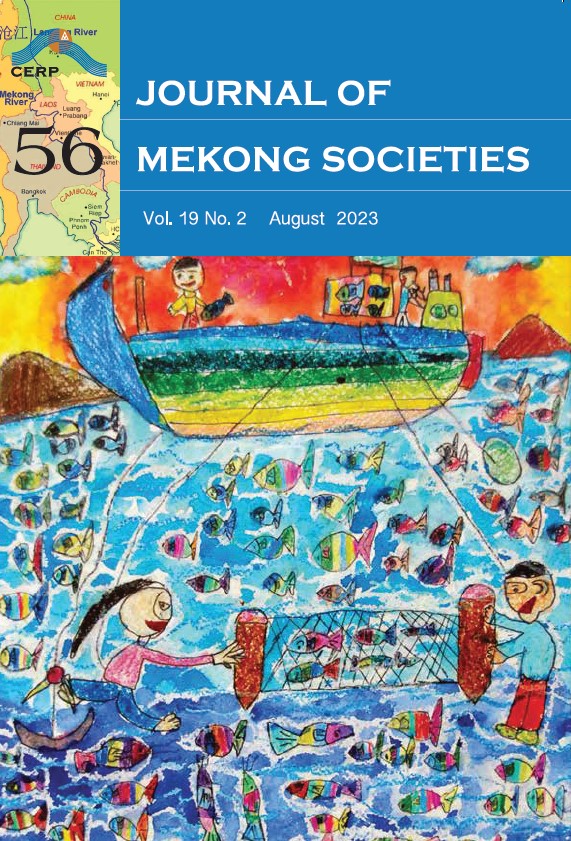Creativity of Students’ Cultural Product Design Using the SCAMPER Technique
Main Article Content
Abstract
SCAMPER is a creative technique used to apply innovative ideas; however, few studies have investigated its role in developing creative ideas for cultural product design. The present study aimed to assess the creativity of a group of Thai product design students in using the SCAMPER technique. The research was conducted at Suan Sunandha Rajabhat University in Bangkok, Thailand, with 25 third-year students aged 19-21 participating in an eight-week study. Students were instructed on how to use the SCAMPER technique to come up with creative ideas, and their creativity was measured by four factors: fluency, flexibility, originality, and elaboration. Three product design experts with at least five years of experience in creative cultural product design served as evaluators. According to the findings, the technique contributed greatly to the students generating creative ideas in cultural product design.
Article Details

This work is licensed under a Creative Commons Attribution-NonCommercial-NoDerivatives 4.0 International License.
References
Barlex, D. (2006). Pedagogy to promote reflection and understanding in school technology courses. In J. Dakers (Ed.), Defining technological literacy. Towards an epistemological framework. (pp. 179-196). New York: Palgrave Macmillan.
Brownell, B. (2006). Transmaterial: A catalog of materials that redefine our physical environment. Hudson, NY: Princeton Architectural Press.
Bryman, A. (2001). Social research methods. New York: Oxford University Press.
Busch, A. (2002). Design is: Words, things, people, buildings, and places. Hudson, NY: Princeton Architectural Press.
Buxton, B. (2007). Sketching user experiences: Getting the design right and the right design. Elsevier.
Chen, C. W. (2018). New product styles and concepts in the bicultural context. The Design Journal: An International Journal for All Aspects of Design, 21(6), 771-787.
Chong, M. (2004). Designing the user experience for international web users. West Yorkshire: Emerald Group Publishing Limited.
Cross, N. (1999). Natural intelligence in design. Design Studies, 20(1), 25-39.
Elisondo, R. C. (2022). Creative processes and emotions in COVID-19 pandemic. Creativity Studies, 15(2), 389-405.
Gerstenfeld, N. (1999). When things start to think. New York: Hodder & Stoughton.
Ingerman, A. and Collier-Reed, B. (2011). Technological literacy reconsidered: A model for enactment. International Journal of Technology and Design Education, 21, 137-148.
Julier, G. (2014). The culture of design. (3rd. ed). London: Sage. Kelley, T. and Littman, J. (2005). The ten faces of innovation: IDEO’s strategies for beating the devil’s advocate & driving creativity throughout your organization. New York: Currency/Doubleday.
Lowenfeld, V. (1993). Art education for humans. Carbondale, IL: Southern Illinois University Press.
Martin, A. (2017). Visual knowledge for multimodal learning. Skane Lan: Studentlitteratur.
McKilligan, S. (2011). Creativity through design heuristics: A case study of expert product design. Design Studies, 32(4), 384-415.
Middleton, Howard. (2005). Creative thinking, values and design and technology education. International Journal of Technology and Design Education, 15, 61-71.
Morris, R. (2016). The fundamentals of product design. London: Bloomsbury Publishing.
Potter, N. (2002). What is a designer: Things, places, messages. London: Hyphen Press.
Toraman, S. (2013). Application of the six thinking hats and SCAMPER techniques on the 7th grade course unit, “Human and Environment:” An exemplary case study. Mevlana International Journal of Education, 3(4), 166-18.
Website
Wakefield, J. (2017). TED Global: Africa needs more engineers and makers. BBC News. Retrieved December 15, 2021 from https://www.bbc.com/news/technology-41080479


